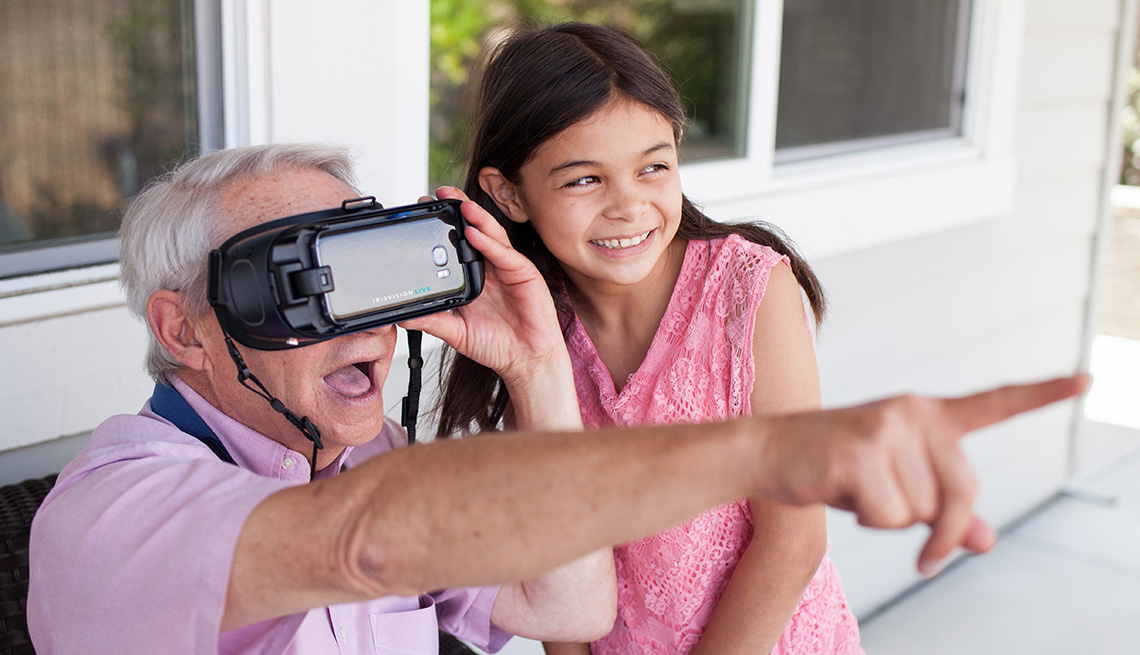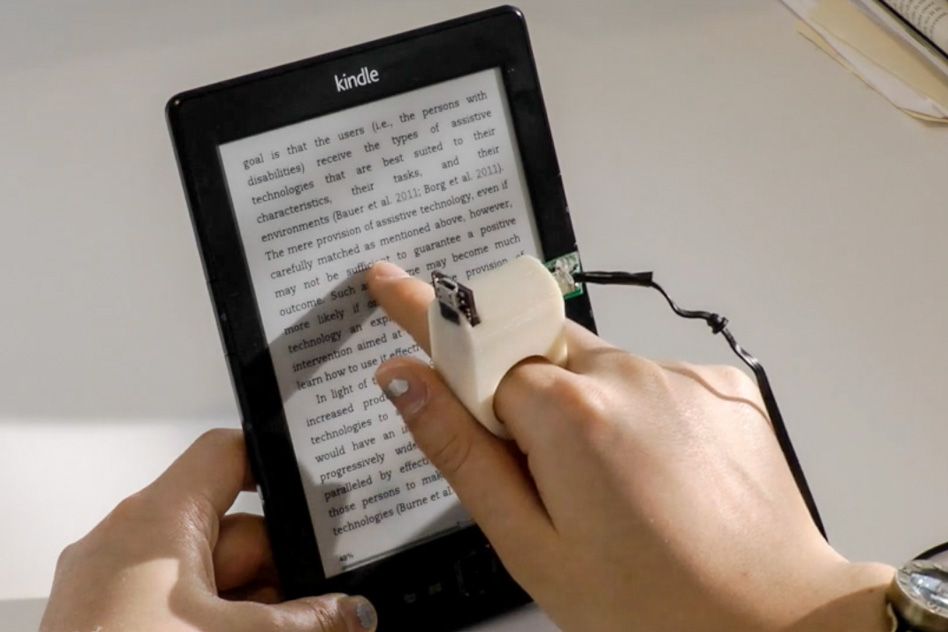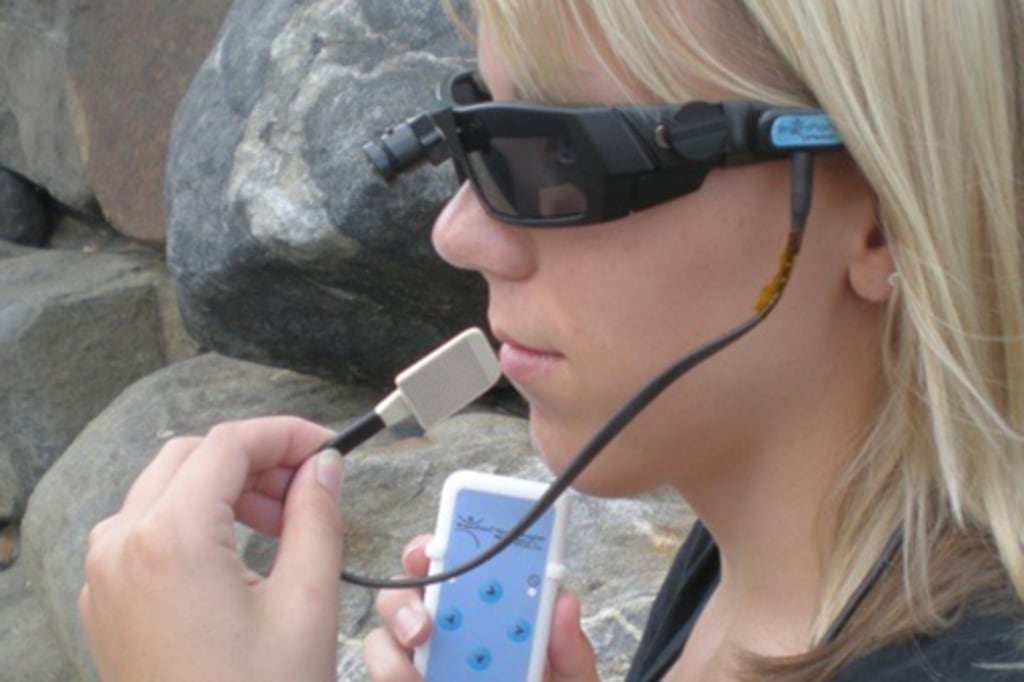Assistive Technology for the Blind: Tools to Transform Lives
Assistive Technology for the Blind: Tools to Transform Lives
Blog Article
Discover Cutting-edge Tools Created for the Visually Impaired
The growth of ingenious devices for the aesthetically impaired represents a substantial advancement in accessibility and self-reliance. Technologies such as wise glasses with AI abilities and mobile applications designed to supply auditory descriptions are improving day-to-day experiences for individuals. Furthermore, wearable gadgets that employ haptic feedback improve ecological recognition, while modern Braille advancements supply new methods to involve with text. As these devices continue to develop, their effect on the lives of those with aesthetic impairments raises crucial concerns concerning the future of inclusivity and freedom in various aspects of life. What lies ahead in this technical landscape?
Smart Glasses for Navigation

Smart glasses developed for navigating are transforming the way aesthetically impaired individuals connect with their atmosphere. These innovative devices utilize a mix of video camera technology, expert system, and acoustic responses to supply real-time information concerning surroundings. By using challenge detection systems, wise glasses can signal individuals to possible dangers, enabling much safer mobility in both familiar and unfamiliar setups.
The assimilation of GPS innovation additionally improves navigating capabilities, enabling users to obtain acoustic directions as they relocate. This hands-free technique not only fosters independence but likewise equips aesthetically damaged individuals to browse urban landscapes with increased confidence. Furthermore, lots of smart glasses are outfitted with attributes that identify landmarks and road indicators, offering contextual info that improves the customer experience.
Additionally, the growth of these tools is constantly advancing, with firms working to enhance the accuracy of item recognition and broaden the series of navigational attributes. As wise glasses end up being much more affordable and easily accessible, they hold the potential to considerably change day-to-day live for visually impaired individuals. Ultimately, these ingenious devices stand for a crucial step towards inclusivity, offering enhanced flexibility and a greater sense of autonomy for people navigating the world around them.

Mobile Application for Daily Living
Exactly how can mobile applications enhance the everyday lives of visually impaired individuals? Mobile applications are reinventing the way visually damaged individuals browse their atmospheres, manage everyday tasks, and accessibility details. These applications provide important assistance with different capabilities, promoting independence and enhancing top quality of life.
Several innovative mobile applications are created particularly for everyday living. Applications like Be My Eyes link visually impaired users with sighted volunteers using video clip telephone calls, allowing them to obtain real-time assistance with jobs such as reviewing labels or navigating strange rooms. In A Similar Way, Seeing AI, created by Microsoft, utilizes expert system to explain environments, checked out message, and determine objects, successfully changing a mobile phone right into a powerful tool for everyday assistance.
Furthermore, navigating applications tailored for the visually impaired, such as Aira and BlindSquare, supply audio-based instructions and ecological details, allowing individuals to traverse their surroundings securely and confidently. Past navigating and immediate assistance, mobile applications additionally support organization and job monitoring, with functions that help customers establish suggestions, produce to-do lists, and track consultations. In summary, mobile applications work as vital resources, empowering visually damaged individuals to lead even more independent and meeting lives.
Wearable Technologies for Support
Empowerment via modern technology is increasingly evident in the realm of wearable tools made to help aesthetically damaged individuals. These ingenious tools incorporate seamlessly into day-to-day live, enhancing navigation and giving essential comments to individuals. Clever glasses equipped with cameras can recognize faces and read message aloud, permitting individuals to communicate more with confidence in social and professional settings.
Another notable innovation is the usage of haptic feedback systems in wearable tools. These systems use vibrations or other tactile signals to communicate information concerning the user's setting, such as obstacles or modifications in surface, boosting wheelchair and safety. Wearable modern technologies also consist of wristbands that attach to mobile phones, informing users to notices with subtle resonances, hence enhancing connection without dependence on visual signs.
As these technologies continue to advance, they are not just improving freedom for visually damaged individuals but likewise cultivating a greater sense of incorporation in society. By connecting the gap between obstacles encountered in daily living and the capacity for freedom, wearable technologies function as crucial devices in the quest for equality and empowerment for those with aesthetic impairments.
Audio Description Devices
Audio description devices play an important duty in enhancing access for visually impaired individuals, offering them with the capacity to involve with visual media. Assistive technology for the blind. These devices supply narrated descriptions of vital visual aspects in movies, tv programs, and live efficiencies, ensuring that users can fully comprehend the context and feelings conveyed with visuals
Audio summary can be incorporated right into numerous platforms, including streaming services, cinema screenings, and live movie theater. Lots of prominent streaming solutions now consist of audio description as an accessibility feature, allowing audiences to select it easily. Along with mainstream media, specialized apps also exist, providing audio visite site summaries for art events, galleries, and various other social events.
The efficiency of audio description hinges on the ability of the storytellers, that need to communicate aesthetic information succinctly without taking away from the original audio. Innovations in this area are additionally leading the way for more customized experiences, where users can readjust the degree of detail and pacing according to their preferences.
Braille Innovations and Gadgets
Braille devices and technologies have substantially transformed the means aesthetically damaged individuals engage with message and information. Modern improvements have actually resulted in the growth of versatile tools that enhance proficiency and freedom among individuals. Especially, Braille display technologies have advanced, enabling vibrant analysis experiences. These devices convert electronic text right into Braille, enabling users to access a huge selection of information on computer systems, tablet computers, and mobile phones.
Furthermore, mobile Braille notetakers incorporate typical Braille input with modern-day functionalities, facilitating note-taking, organizing, and paper editing on the go. Braille displays and notetakers. These compact devices commonly feature text-to-speech capacities, connecting the space between Braille and auditory information
Furthermore, ingenious Braille printers have actually arised, allowing customers to generate Braille tags, records, and instructional materials successfully. This ease of access fosters better engagement in academic and professional settings, inevitably promoting inclusivity.
In useful link addition, research into clever Braille technologies proceeds to broaden. Instruments that include expert system are being explored to supply real-time navigation assistance and contextual details, enhancing the individual experience in diverse setups. Overall, these technologies reflect a dedication to equipping aesthetically impaired people via innovation, guaranteeing they can easily accessibility and engage with the globe around them.

Conclusion
The development of ingenious tools for the aesthetically damaged dramatically enhances self-reliance and lifestyle. Smart glasses, mobile applications, wearable modern technologies, audio summary devices, and Braille technologies jointly encourage people by giving essential navigation support, environmental understanding, and enhanced analysis experiences. These technologies not just foster greater incorporation yet additionally advertise autonomy in day-to-day activities, inevitably adding to a more available and equitable society for visually impaired individuals. Proceeded development in this field holds promise for further improvements.
As wise glasses become extra available and affordable, they hold the potential to dramatically change daily life for visually damaged customers. Mobile apps are reinventing the means visually damaged customers find here navigate their settings, handle daily jobs, and access details. Apps like Be My Eyes link aesthetically damaged customers with sighted volunteers through video clip calls, enabling them to get real-time aid with jobs such as checking out tags or browsing unfamiliar spaces.Additionally, navigation apps customized for the aesthetically impaired, such as Aira and BlindSquare, provide audio-based instructions and ecological details, enabling users to traverse their surroundings securely and confidently.The development of ingenious devices for the aesthetically damaged significantly enhances self-reliance and quality of life.
Report this page